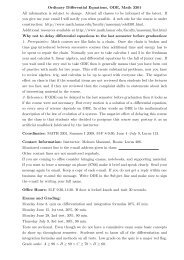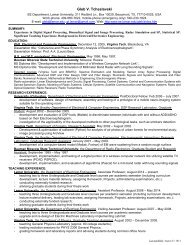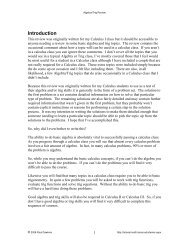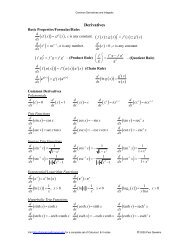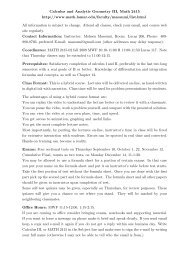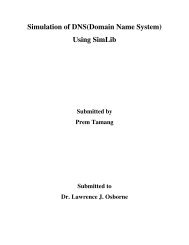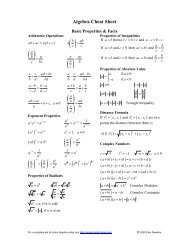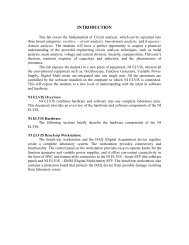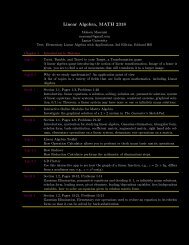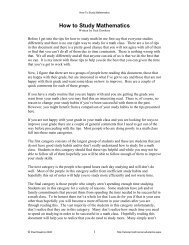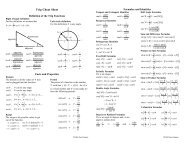program self-study report - Lamar University Electrical Engineering
program self-study report - Lamar University Electrical Engineering
program self-study report - Lamar University Electrical Engineering
Create successful ePaper yourself
Turn your PDF publications into a flip-book with our unique Google optimized e-Paper software.
Self-assessment of limitations on the education of engineering students resulting from the currentlibrary facilities and improvements that would be most beneficial:A recent <strong>report</strong> of holdings for chemical engineering and related fields was found sufficient to support anew doctoral <strong>program</strong> in that department. In partial support of the requirements for the new degree, theLibrary acquired subscriptions to two engineering-related databases: Knovel and Web of Science. Theprint journal collection is further supplemented by a number of full-text databases, which are listedseparately. The continual rise in cost of journals often infringes upon the amount of money available forpurchasing monographs, but the Library’s participation in the statewide TexShare system affords patronswith a courier system that provides rapid access to items held by other participating libraries.Other learning resources (e.g., maps, microfiche, audio and video tapes, discs, etc.).The <strong>Lamar</strong> library contains over 570,700 volume equivalents of microform materials, 7902 maps, and6,894 items of audio-visual materials. The microform materials cover a broad range of disciplines, butperhaps the most important to engineering is the back runs of many journals. The majority of maps aretopographical. The audio-visual collection contains tapes (audio and video), films, slides, and records.Most of the A-V materials are instructional. There is a collection of PC software (discussed previously)available for student use in the Media Services computer lab.B. Background Information Relative to the <strong>Engineering</strong> Unit1. <strong>Engineering</strong> Educational UnitAn organizational chart showing the position of the engineering unit within the institution isshown in Table II-2a-1 and Table II-2a-2 on pages 26-27. The organization chart for the Collegeof <strong>Engineering</strong> is shown in Table II-2b on page 28. The College of <strong>Engineering</strong> consists of thedepartments of Chemical <strong>Engineering</strong>, Civil <strong>Engineering</strong>, <strong>Electrical</strong> <strong>Engineering</strong>, Industrial<strong>Engineering</strong>, and Mechanical <strong>Engineering</strong>. Service functions <strong>report</strong>ing to the dean include theadvising center, recruiting and co-op office, and minority recruiting and retention. The TexasCenters for Technology Incubation (TCTI) is an umbrella research organization which <strong>report</strong>s tothe dean. The organization chart for the TCTI is shown in Table II-2c on page 29. Allengineering courses, <strong>program</strong>s and degrees are supervised by the above departments withengineering in their title.Administrative HeadChairs of the engineering education units are:• College of <strong>Engineering</strong> – Jack Hopper, Ph.D., P.E., Dean• Chemical <strong>Engineering</strong> – Kuyen Li, Ph.D., P.E., Chair• Civil <strong>Engineering</strong> – Robert Yuan, Ph.D., P.E., Chair• <strong>Electrical</strong> <strong>Engineering</strong> – Harley Myler, Ph.D., P.E., Chair• Industrial <strong>Engineering</strong> – Victor Zaloom, Ph.D., P.E., Chair• Mechanical <strong>Engineering</strong> – Malur Srinivasan, Ph.D., P.E., ChairII - 141




